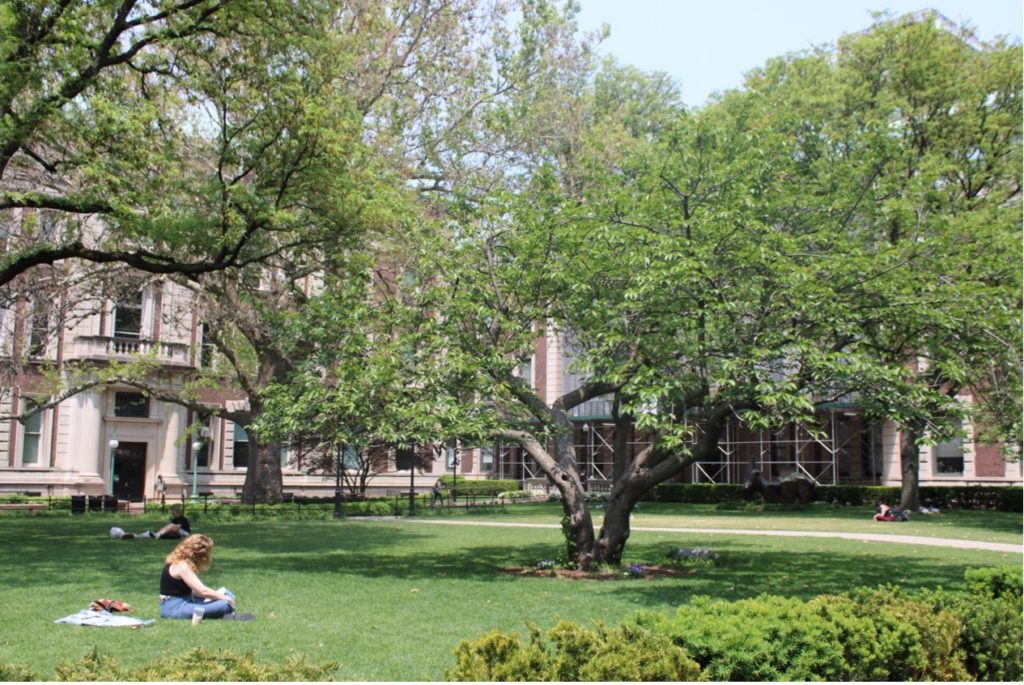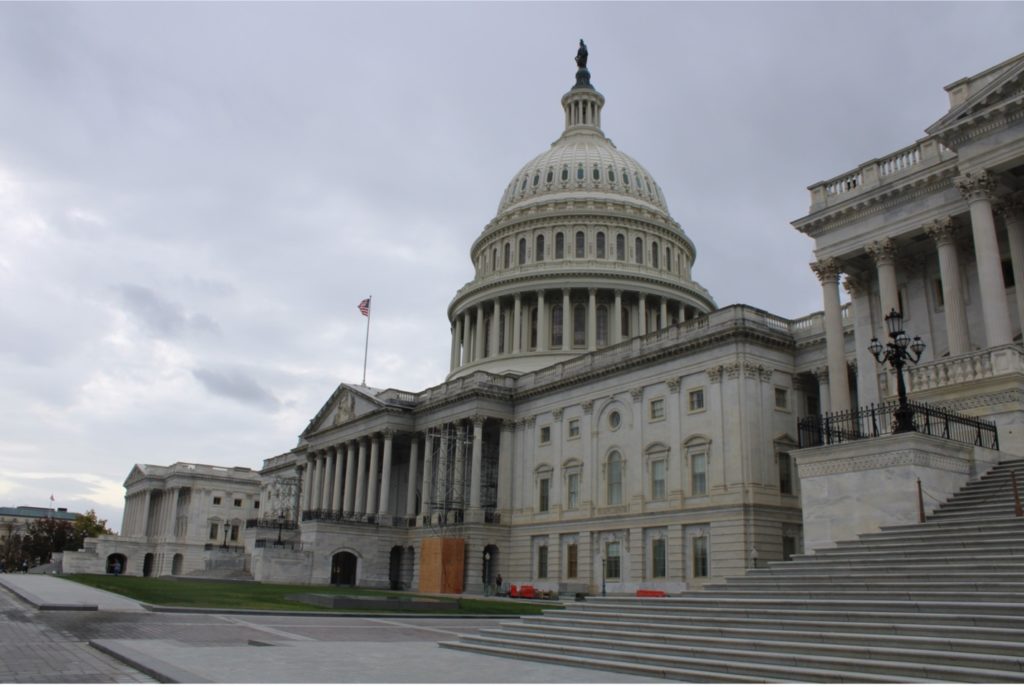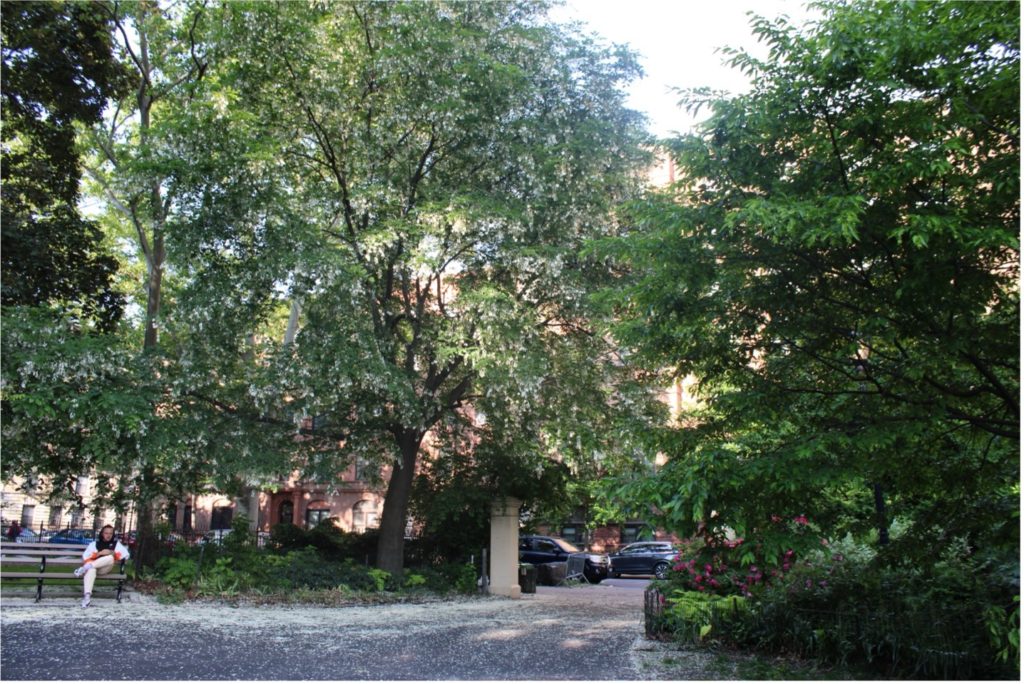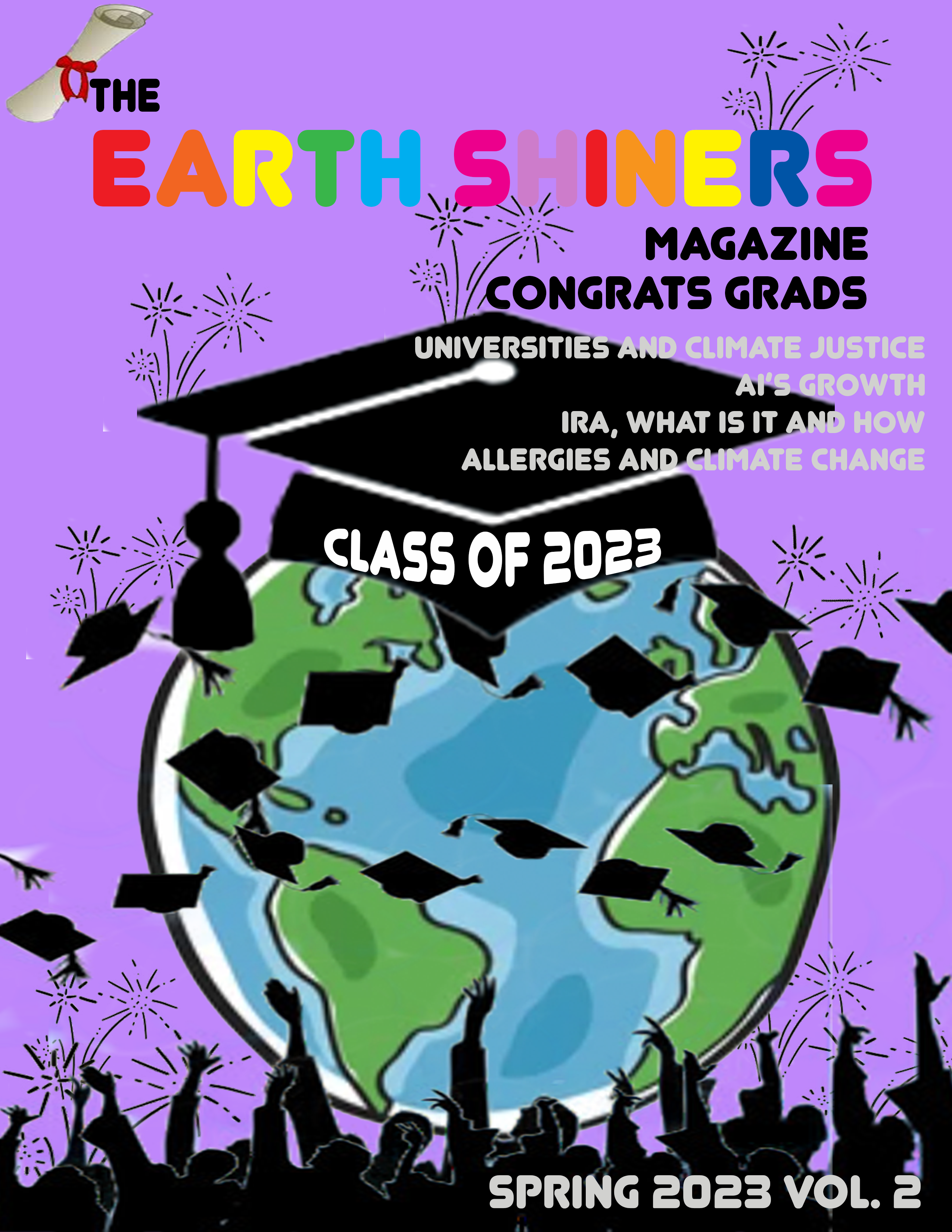The Role of Universities in the Movement for Climate Justice
Written by: Josh Nodiff
What role should universities play in advancing climate action? An interdisciplinary environmental education, as well as vocational training for green jobs, are certainly necessary and in high demand. However, pedagogy is far from enough. Universities have a moral responsibility to leverage their intellectual capital and respond to the needs identified by communities on the frontlines of the climate crisis.

Rashawn Merchant/Earth Shiners
Communities around the world are organizing themselves to ameliorate the ways in which they are harmed by the climate emergency. Universities can offer unparalleled support to frontline communities in the struggle for a just and regenerative future. Legal aid, financial resources, data literacy, policy analysis, research facilities, media power, scientific tools, and technical training are some ways universities can tap into their vast intellectual capabilities.
Such an approach would necessarily enable universities to transform climate research into climate action. It requires shifting the purpose of universities from research to action. However, certain parameters must be implemented to ensure an approach grounded in justice, trust, and accountability. For instance, the support offered by universities must be pro bono, with no strings attached. Universities must not search blindly for problems to solve but rather listen to and learn from the wisdom and leadership of frontline communities.

Rashawn Merchant/Earth Shiners
Universities must be invited to a community and must follow the invitation with a question asking how they can best support communities. Rather than prescribing their own solutions, universities must uplift the solutions already being developed by communities and bolster those solutions through the redistribution of intellectual capital. Climate research conducted at universities is typically funded by third-party investors seeking to advance their own agendas. Climate action, however, must be devoid of such prescriptive and preordained solutions.
Universities can be indispensable in supporting frontline communities in the struggle for climate justice. However, mutual trust is a necessary requirement — especially when trust has historically been absent or abused — and transformative change can only happen at the speed of trust.
AI’s Growth with Humanity
Written by: Alejandro Pineda Catalan
Technology has doubled in speed and power, and we have seen exponential growth within the last few decades. In the ’70s, personal computers became a norm alongside the introduction of the internet. In the ’90s, we saw a rise in the use of GPS navigation systems. In the early 2000’s we were introduced to the infamous smartphone, and with that came social media. Undoubtedly, more impactful technology has also seen a rise within these times. However, the few named above have been influential.
The tech industry has become one of the most profitable compared to other industries. Big tech has grown at a rapid pace just within the last twenty years. On a global scale, fewer than 7% of the population was online at the start of the century; compared to today, more than half the population has access to the internet. Today’s technology has an impression on almost every daily activity, whether it involves work or simply going to the grocery store for weekly shopping.
As technology advances, so do the possibilities that come with it. Technology has outgrown itself, benefiting other sectors such as the medical field, business, communications, education, and more. Artificial Intelligence has become a trending topic, with one of the newest programs like ChatGPT creating advances but also concerning drawbacks. ChatGPT, for example, is a language program that pulls human knowledge from the internet to develop conversations, complete tasks, and even create essays and code. ChatGPT could even help write this piece about itself.
This capability ultimately raises many questions whether AI programs similar to ChatGPT will hinder or create alternatives to how humans can interact with each other, the environment, and, undoubtedly, AI itself. From an environmental standpoint, AI has tremendous benefits ranging from better and faster satellite images for rainforest destruction or natural disasters to developing a better system for agricultural production. AI can also assure accountability for governments and companies to adhere to their emission targets.
Programs such as this have unique advantages but still create negatives, such as energy consumption to run these programs. The Council on foreign relations stated that running one AI system can emit over 250,000 pounds of carbon dioxide. Nonetheless, AI scientists and engineers have already taken these issues and are working to create sustainable solutions to many of these environmental concerns.
Everyday individuals and those in the working class are a spectacle of what AI means for their future and careers. Instead of fearing what will result from the growth of AI, one should learn how to implement these programs into our work tasks and understand the benefits they can bring. Companies like Microsoft have already invested millions into OpenAI (creator of ChatGPT) to introduce new programs that they believe will be integrated by humans into AI. Companies will be moving along with AI and looking for individuals familiar with how these programs operate and if they can create benefits within the field. Careers in the criminal justice department, journalism, computer programming, and even a salesperson can integrate AI to save time and apply programs to everyday routines.
Technology will continue to grow, and the cycles of technology will impact humanity at even more extraordinary lengths each cycle. Bill Gates has even stated that this wave of AI will be one of four technology cycles that he deems will create the most change for humanity. While questions arise, AI will undoubtedly continue to grow. When the internet started, companies, individuals, and organizations took advantage of it and created opportunities. That will also be the case for AI, and we will, in the years to come, see shifts in how specific jobs get completed and how humanity will either grow with AI or combat against it.
The Inflation Reduction Act:
Why does it matter and how does it affect you?
Written by: Guiller Lorenzo Cenizal

Rashawn Merchant/Earth Shiners
The Inflation Reduction Act–also known as the IRA to most people and news outlets–was a landmark piece of legislation in effect as of August 2022. The piece is an all-encompassing and aisle-crossing policy that covers a wide range of topics, activities, and sectors ranging from energy, farming, work, economics, and infrastructure. Even the name itself is somewhat ambiguous–sure, it has something to do with inflation and economics, but to the less initiated, that is all one could draw from it.
Yet, it comes as a landmark piece of climate legislation. The IRA is a revolutionary act that opens several different avenues for the future of net-zero, climate change policy, and sustainability in the United States. Frankly, some of its success is attached to the name. How it appears makes it less of a political issue and more of an economic one. The same can relate to the failures of, for example, the Farm Bill, whose highly politicized name has hindered any real progress in protecting agriculture and increasing food system security in the past decade and a half.
Now, what makes it such a landmark piece of climate legislation? It is about inflation, isn’t it?

Rashawn Merchant/Earth Shiners
It certainly is. However, it is essential to recall that Climate Change is also a highly economic issue. There are numerous studies, even coming out from a few years ago from the Environmental Protection Agency and Intergovernmental Panel on Climate Change, which suggest that a tenth drop in global GDP due to climate change-related incidence, whether it be through supply chain disruption, the destruction of infrastructure, healthcare costs, and other subsequent stocks, flows, shocks, and variables. Hundreds of millions of dollars and tens of millions of people will succumb to climate change disruptions in the next half-century.
As a successor to Build Back Better, the Inflation Reduction Act will build high-quality and highly specialized jobs for the American economy. The ramifications of climate change will manifest in heavy investments in renewable energy infrastructure. These outcomes include; new wind turbine operations, new solar farms, and updating energy grids across the country. This labor- and capital-intensive development needs highly trained individuals to build out and maintain. This need is not only a mitigation measure to slow down the effects of the fossil fuel industry on climate change but also the creation of an economy that is theoretically more resilient to economic shocks.
Combining climate mitigation and adaptation is in vogue, especially in larger, more developed economies like the United States. While the Inflation Reduction Act is not an all-encompassing omnibus of Climate Change related legislation, it certainly presents a good starting point for the future of energy and development in America. Speaking in the vernacular of Washington and private firms–economics–is an excellent tool.

Drew Angerer/Getty Images
Now, what does this mean for the average person? Aside from the common good of slowing climate change down and arguably improving air quality, the most significant gains the average American will probably see within the next few years is likely a decrease in energy prices as renewables begin to supplement and slowly replace the dominance of fossil fuels. In this same vein, there is potential for more rebates and incentives for homeowners to electrify their homes and cities beginning to increase decarbonization efforts–Local Law 97 in New York City being a prime example of efforts at the municipal level.
This example differs from saying this will be a perfect answer or transition. There could be some short-term sacrifices for long-term stability and security. From possible tax ramifications, short-term price increases, private sector engagement, and zoning provisions, amongst a host of other things, that can become obstacles. Nevertheless, what it symbolizes is a step in the correct direction. The supplementing of market mechanisms in order to shift the paradigm. The deflation of egos and the fossil industry for the inflation of everyday goods and the future.
Climate Change and Allergies
Written by: Rashawn Khamari Merchant
During this year’s spring, it has not been uncommon to hear about the troubles allergies have caused people. Watery eyes and coughing have been apparent as plant particles have covered areas as people try to enjoy the season. While pollen and plant matter have always been around, climate change may exacerbate their effects and worsen over the years.

Rashawn Merchant/Earth Shiners
The increasing amounts of CO2 in the atmosphere are leading to hotter temperatures across the globe. Scientists have agreed that this temperature increase leads to unfavorable human health changes. As plant conditions respond to Earth’s temperatures, there is a connection to how changes in plant growth will affect us as humans, and plants are directly linked. CO2 is the supplier of carbon for plants’ photosynthesis process. Interestingly, as more CO2 will lead to lush plant environments, carbon will not discriminate between the plants we want and those we do not. While most would want more rose bushes, unwanted allergy-causing plants such as ragweeds or poison ivy would also grow.

Rashawn Merchant/Earth Shiners
According to Peter Gergen, M.D., 30 million people are affected by plant-based respiratory allergies. When inhaling heavy amounts of pollen, sneezing, inflammation, and wheezing are common side effects. Ear, nose, and throat infections can occur in people with severe allergies.
Three distinct plant-based inputs relate to pollen production: spring trees, summer grasses, and ragweed (Ambrosia spp.) in the fall(Ziska et al., 2008). Research on pine trees conducted at the Duke University Forest Free-Air CO2 Enrichment site showed that elevated CO2 levels resulted in early pollen production in younger trees( LaDeau & Clark, 2006).
Dr. Lewis Ziska also notes that fossil fuel burning may correspond with allergens. Diesel products help aeroallergens move deep into the airways.

Rashawn Merchant/Earth Shiners
Like many of Earth’s changing climate conditions, we must look at the past to see how human planning has enlarged its effects. In 1949, the USDA released a Yearbook of Agriculture recommending male trees for street planting. Their advice was that male trees should be selected because they do not release fruit and seeds, making them easier to clean. Wholesale growers began selecting trees that were clones of other males. While these trees were considered “easier” to manage(they still shed leaves and branches), they ultimately are the ones that produce pollen and lots of it.

Rashawn Merchant/Earth Shiners
Botanical Sexism is a theory created to combat the consequences of predominantly planting male trees. Planting other female trees would counteract the pollen production of male trees positively. Supporting tree planting organizations would serve as a benefit as many have begun advocating for urban planting to balance the sexes during landscaping and renewal projects. In big cities, female trees would also better clean air toxins. Female trees could store toxins in their seeds instead of male trees releasing the toxins back through pollen.
In the meantime, consistent allergy medication can help reduce the severity of respiratory attacks.
Thanks for reading!
Copyright Earth Shiners Creative LLC 2023
Earthshiners@earthshinersmagazine.com

Leave a Reply